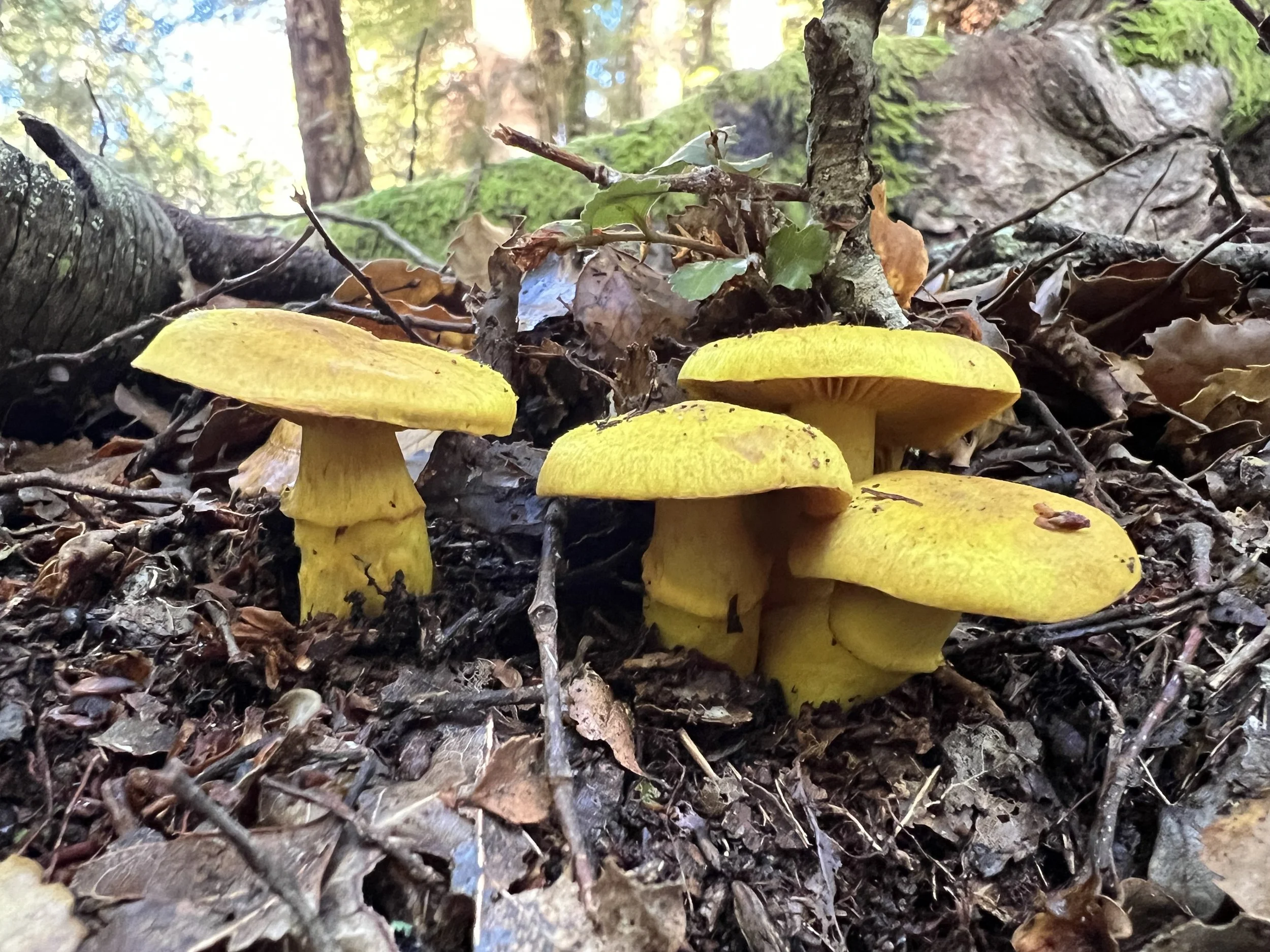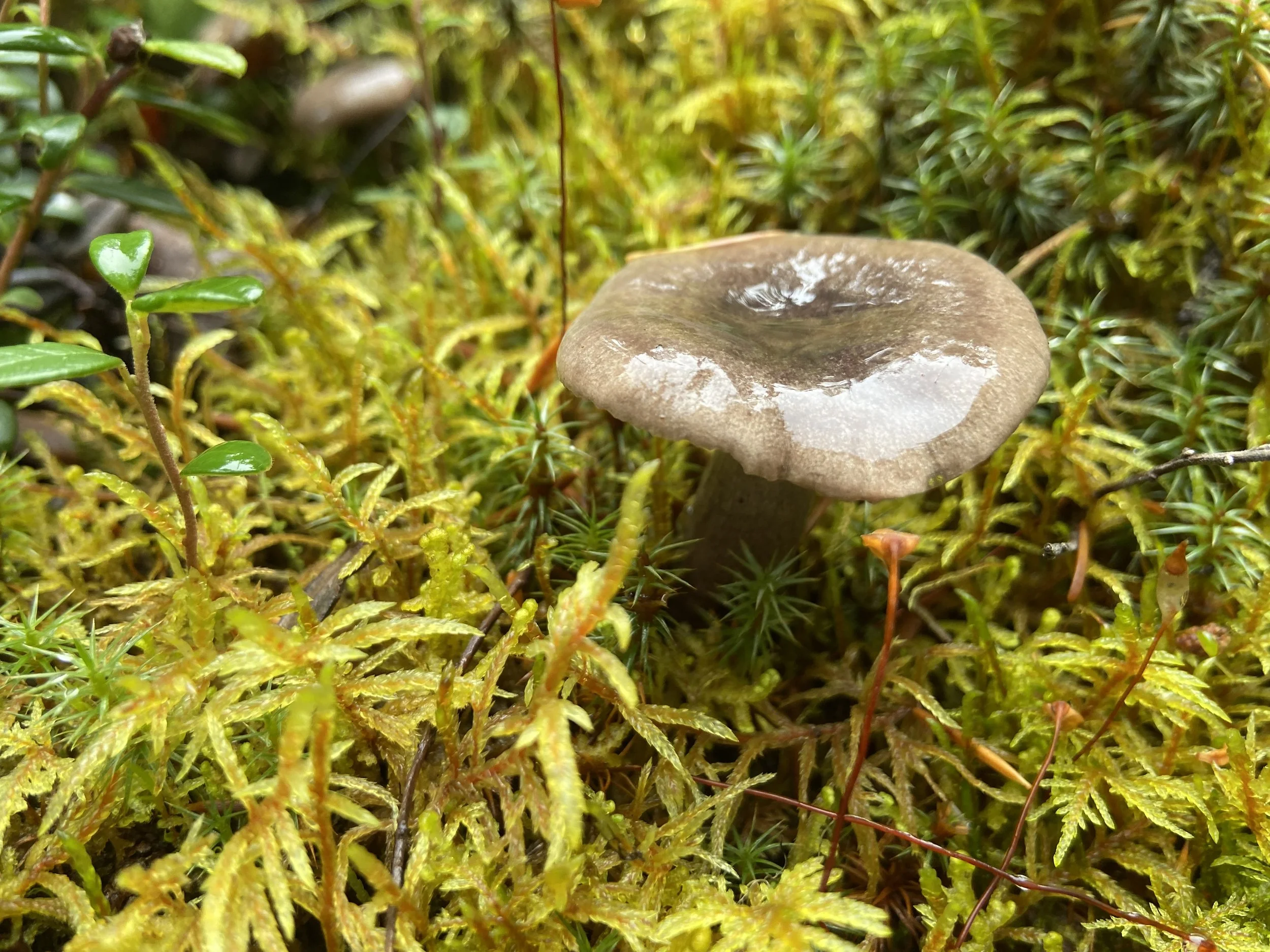The problem of “dark taxa” in ectomycorrhizal fungal conservation and research
Laura van Galen, ETH Zürich (Switzerland) & SPUN (Society for the Protection of Underground Networks)
Image credit: David Orlovich
The ectomycorrhizal species Cortinarius canarius growing in New Zealand
The symbiotic relationship between plants and mycorrhizal fungi drives many aspects of ecosystem structure and function, but fungi have been historically overlooked when it comes to ecosystem management strategies. However, there is growing momentum to recognise the importance of fungi in ecosystem conservation and restoration. The rise of environmental DNA (eDNA) technology is giving us unprecedented insight into where mycorrhizal fungal species occur, their diversity, and how their communities are structured. We now have global databases of eDNA fungal sequences, providing the potential to map species at the global scale. However, what we can do with these databases is currently limited, because the vast majority of DNA sequences detected are “dark taxa” – those that cannot be matched to named species, or even genera or families in some cases.
Image credit: Michael Van Nuland
Species: Geopyxis carbonaria
Because dark taxa have no names, we cannot evaluate their threat status using tools like the IUCN Red List of Threatened Species. It’s also practically impossible to advocate for the protection of unnamed species or include them in conservation planning. Recently, scientists at SPUN (Society for the Protection of Underground Networks), ETH Zurich, and GlobalFungi conducted a review to quantify the dark taxa problem for ectomycorrhizal fungi. We found that 83% of OTUs (operational taxonomic units) in the GlobalFungi eDNA database were dark taxa that could not be identified to species level. The ectomycorrhizal fungi are one of the most well-studied fungal groups, and yet we still know so little about the species that exist. High rates of deforestation and habitat degradation around the world means that we are at risk of losing species before we can even uncover their identities.
Image credit: Michael Van Nuland
Genus: Hygrophorus
So, how can we start to uncover what these dark taxa are? Many dark taxa are likely new species not yet known to science, so more effort is needed to collect and describe these species, particularly in tropical and southern-hemisphere regions where ectomycorrhizal fungi have been under-studied. Developing new methods to describe species based on phylogenetics rather than physical specimens is also important, because many species produce physical structures that are microscopic or not easily observed. However, many dark taxa may not actually be unknown species. eDNA sequences are matched to species names using reference databases like UNITE. Although the quality of reference databases is constantly improving, they contain many gaps and biases. For example, we found that in Australia 54% of the 1,906 unique ectomycorrhizal fungal species known to exist are not currently included in the UNITE reference database. That means these species will be automatically classed as dark taxa in eDNA datasets simply because they are not in the reference database. Obtaining sequences of these species from herbarium specimens and adding them to reference databases could be a relatively straightforward step for reducing the number of species classed as dark taxa in eDNA datasets.
We have a long way to go – but making concerted efforts to uncover and identify dark taxa is critical if fungi are to be adequately understood and protected. eDNA has huge potential for uncovering the hidden world below ground, but only if we can identify and make use of the vast numbers of DNA sequences that are detected.



